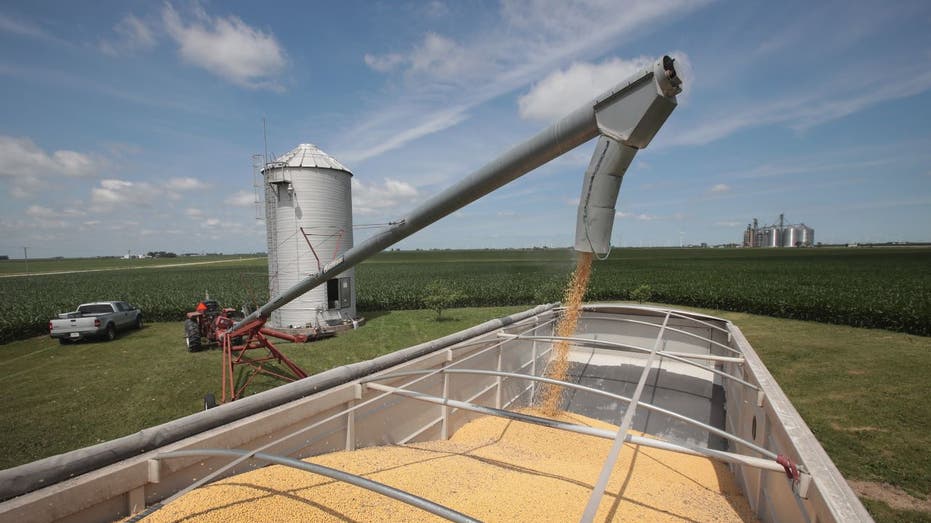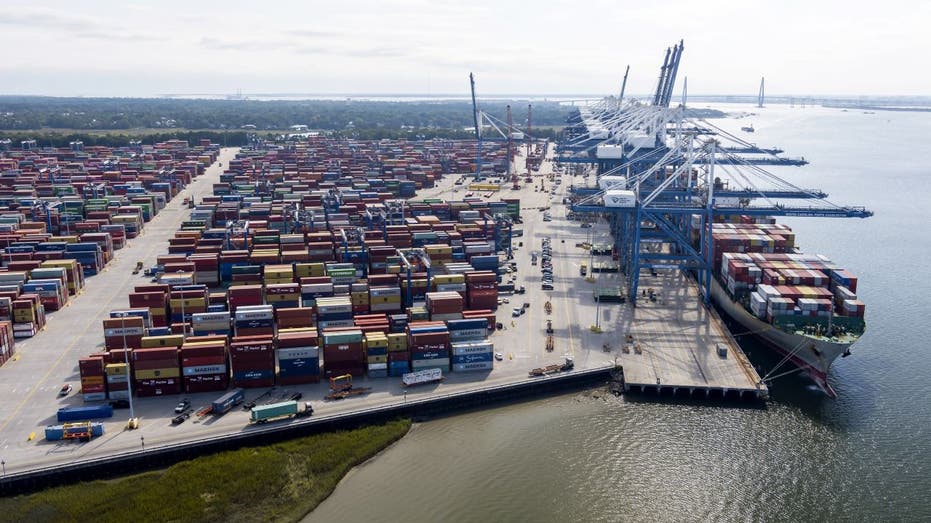President Donald Trump announced his latest plan for tariffs on Wednesday afternoon during an event at the White House Rose Garden, which he said is going to focus on imposing reciprocal tariffs on U.S. trading partners.
Trump’s “Liberation Day” tariff announcement comes after the conclusion of the trading day for U.S. financial markets, which have been rattled by uncertainty over tariffs in recent weeks. The S&P 500 is down about 3.9% year to date and the benchmark index’s gains since Trump’s election in November have been erased amid concerns about a widening trade war.
“April 2nd, 2025, will forever be remembered as the day American industry was reborn,” Trump said in remarks from the Rose Garden. “In a few moments, I will sign a historic executive order instituting reciprocal tariffs around the world. Reciprocal — that means, they do it to us, and we do it to them. Very simple, can’t get any simpler than that.”
“This is one of the most important days, in my opinion, in American history. It’s our declaration of economic independence. For years, hardworking American citizens were forced to sit on the sidelines as other nations got rich and powerful, much of it at our expense,” Trump said. “But now it’s our turn to prosper, and in so doing, use trillions and trillions of dollars to reduce our taxes and pay down our national debt, and it’ll all happen very quickly.”
WALL STREET FIRMS SEE RECESSION RISK RISING OVER TARIFFS, TRADE WAR
What are the tariffs?
The executive order outlining the reciprocal tariff plan is expected to be released later on Wednesday. The president indicated that aside from the reciprocal tariffs, the administration will establish a minimum baseline tariff of 10%.
During his Rose Garden remarks, Trump held up a poster board showing the combined rate of tariffs and other non-tariff barriers that other countries impose on U.S. exports alongside the reciprocal tariffs the Trump administration plans to levy on imports from those countries. Among those included were:
- China: 67% tariffs and other trade barriers on U.S. goods; 34% reciprocal tariffs.
- European Union: 39% tariffs and other trade barriers on U.S. goods; 20% reciprocal tariffs.
- Vietnam: 90% tariffs and other trade barriers on U.S. goods; 46% reciprocal tariffs.
- Japan: 46% tariffs and other trade barriers on U.S. goods; 24% reciprocal tariffs.
- India: 52% tariffs and other trade barriers on U.S. goods; 26% reciprocal tariffs.
- South Korea: 50% tariffs and other trade barriers on U.S. goods; 25% reciprocal tariffs.
The White House released a full list of the reciprocal tariffs in a post on X:
Canada and Mexico, which are party to the U.S.-Mexico-Canada Agreement (USMCA that Trump negotiated during his first term, did not appear in the White House’s reciprocal tariffs fact sheet. The terms of the USMCA generally lowered or eliminated tariffs on goods covered by the free trade agreement.
White House press secretary Karoline Leavitt said Monday that there are no exemptions to the tariffs, including for farmers, who were a central target for foreign countries’ retaliatory tariffs during Trump’s first term in office.
TRUMP IS ‘ALWAYS UP FOR A GOOD NEGOTIATION,’ WHITE HOUSE SAYS, AS APRIL 2 ‘LIBERATION DAY’ TARIFFS LOOM
Aside from the reciprocal tariff plan, the Trump administration has also discussed an across-the-board tariff of up to 20%, as well as a plan to focus tariffs on 15 countries with high levels of trade with the U.S. and relatively high tariff rates. Those plans appear to have been tabled in favor of the reciprocal tariff plan.
The White House may also launch its “External Revenue Service” to oversee tariff collection by moving that responsibility from the U.S. Customs and Border Protection to the new ERS within the Commerce Department. The Trump administration contends that external companies and countries pay tariffs, though economists broadly agree that they are paid by the importing company, which would in this case be U.S. firms.
TRUMP’S ‘EXTERNAL REVENUE SERVICE’ WILL COLLECT FROM IMPORTERS, NOT ‘FOREIGN SOURCES’

Trump imposed 25% tariffs on imports from Canada and Mexico with a carveout for a lower 10% tariff rate on Canadian energy products, then delayed those tariffs from taking effect on goods covered by the USMCA through April 2, at which time his new tariffs will replace them.
Trump previously announced 25% tariffs on auto imports, which take effect on April 3, and imposed 25% tariffs on imported steel and aluminum. Other sector-specific tariff plans that are influx include copper, semiconductors, pharmaceuticals and lumber.
What’s next?
The Trump administration’s “Tariff Team” has been working on structuring the tariffs and negotiating with a number of other countries. The team includes President Trump, Treasury Secretary Scott Bessent, Commerce Secretary Howard Lutnick, U.S. Trade Representative Jamieson Greer and National Economic Council Director Kevin Hassett.
Leavitt said Tuesday that “quite a few countries” have reached out to the Trump administration to discuss ways to lower tariffs.
HOW MUCH DID TRADE WAR RELIEF COST DURING TRUMP’S FIRST TERM?

The Trump administration has suggested the tariffs — which are taxes on imported goods — could serve several purposes, such as increasing federal tax revenue to offset other tax cuts, encouraging the reshoring of manufacturing, or as a negotiating tool to reduce tariffs among U.S. trading partners.
Those goals are contradictory in some respects: Tariffs that are imposed and later removed through negotiations resulting in lower trade barriers generate less tax revenue and remove the incentive for reshoring. Similarly, if companies move operations to the U.S. to avoid tariffs, the government would collect less tax revenue.
Trump’s announcement could shed more light on what the administration’s end goal for its tariff plans is, as well as the status of its talks with America’s trading partners.
FOX Business’ Edward Lawrence and Christina Wurm contributed to this report.
Read the full article here













